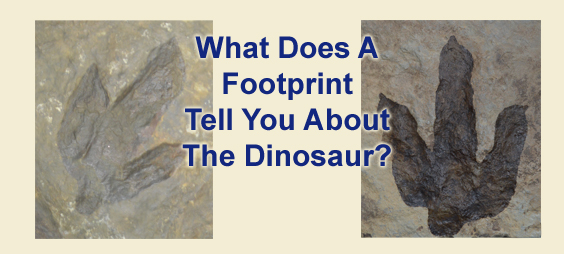
What Can You Learn From A Dinosaur Track?
The size and shape of a dinosaur footprint gives us some information about the dinosaur.
Look at the footprint on the left above. This is an impressed track (indented into the rock). Notice the toe on the left appears to be attached to the side of the foot. That is one characteristic indicating a theropod dinosaur made this footprint. In addition, the toe that appears to be on the side of the foot is always on the inside of the foot. That means the dinosaur's right foot made this footprint.
Next look at the tip of the center toe. Notice that it bends slightly to the left. For theropods the tip of the center toe tends to bend toward the inside of the foot. That's another indication this is a right foot.
Take a look at the footprint on the right (above). Is this a left or right foot? The tip of the center toe is not bent, but the toe on the right may be attached slightly closer to the heel than the toe on the left. That would indicate this may be a right foot. Yes, this track is harder to read. Dinosaur tracks were made by a living animal who could move its foot and change its stance, and the track was made in a medium (mud in this case) that varies greatly. That means dinosaur tracks are highly variable and their identification may not be clear. It also means this track, which most likely is a theropod right foot, may not be a right foot or even a theropod footprint.
Here's something interesting to do: If you visit a museum that has a theropod dinosaur skeleton with footprints on display, check to see if the footprints are correct for the left and right feet. Often they are not.

